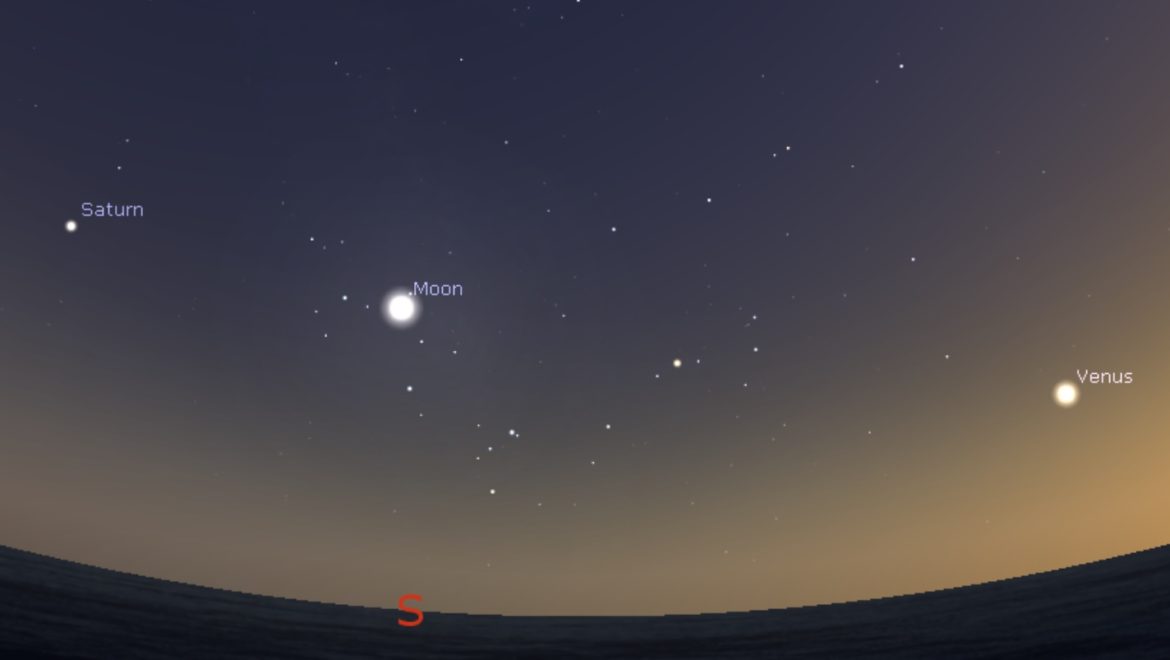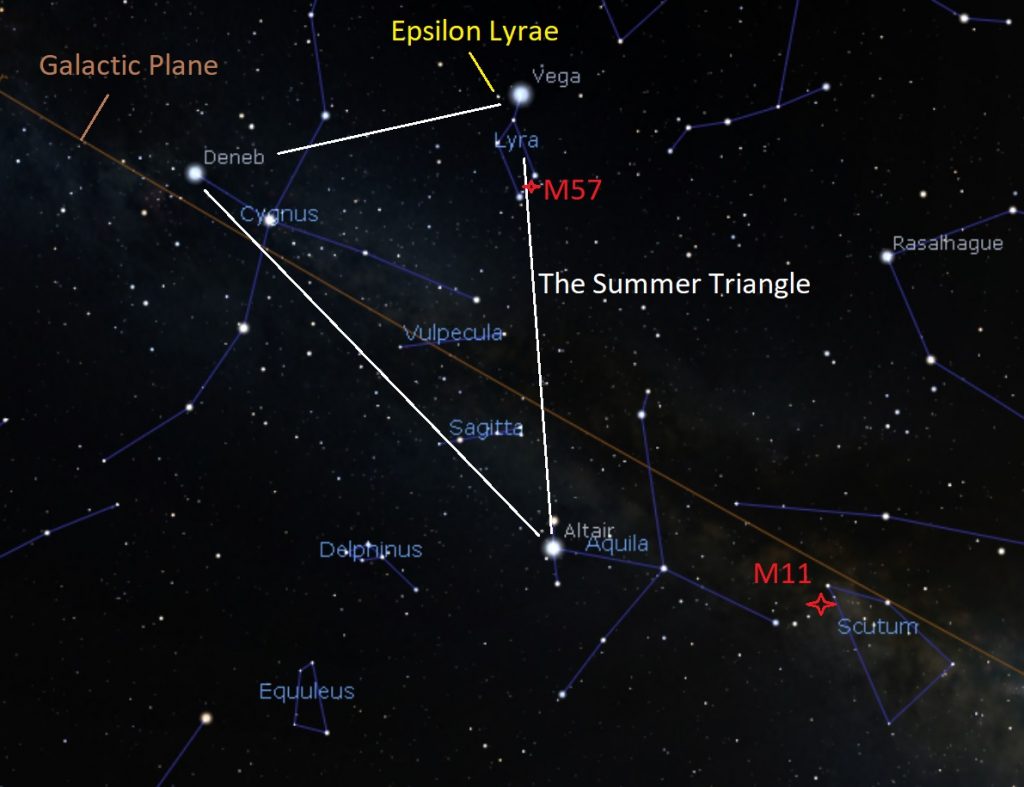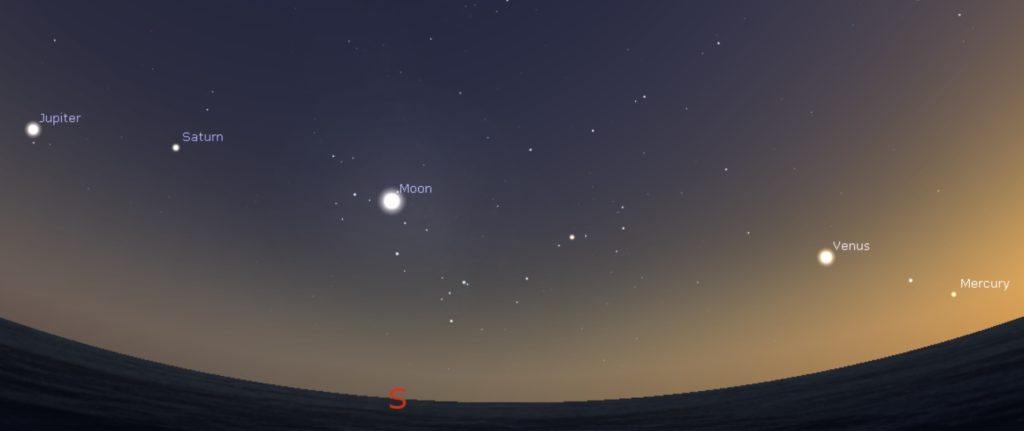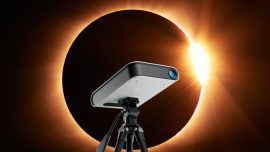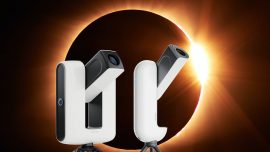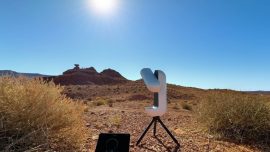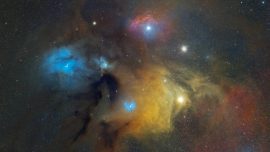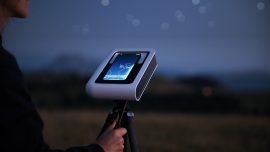New Comet ATLAS May Have Been an Old Visitor
Seen in 2019, Comet Y4 ATLAS may have solved a 19th century enigma… and started a new mystery.

Hubble catches Comet Y4 ATLAS in the act of disintegration. Credit: NASA/Hubble/ESA Quanzhi Ye/Alyssa Pagan/STScI
In a clockwork universe, comets are the great wildcard, often appearing seemingly out of nowhere from the depths of the outer solar system.
Now, a new study links a recent comet with a breakup that may have occurred five millennia ago. The study out of the University of Maryland was published recently in The Astronomical Journal on July 21, 2021.
The story begins with the discovery of Comet C/2019 Y4 ATLAS on the night of December 28, 2019 by the Asteroid Terrestrial-impact Last Alert System (ATLAS) automated sky survey in Hawai’i. ATLAS typically picks up a dozen-odd long period comets a year, most of which never reach naked eye brightness.
But Y4 ATLAS was different. The inbound comet was set to pass 0.77 Astronomical Units (AU) or 116 million kilometers from the Earth on May 23, 2020, and reach naked eye visibility at magnitude 0. As with so many comets however, said apparition never came to pass, as Comet Y4 ATLAS began to disintegrate on April 20th, shattering into 30 separate fragments. The Hubble Space Telescope was on hand to witness the disintegration, reminiscent to the string of comets from Shoemaker-Levy 9 that smacked Jupiter back in 1994.
The Great Comet of 1844
Now, it’s not uncommon for a dynamically new comet to disintegrate as it nears the warmth of the Sun for the first time. What did grab astronomer’s attention was the similarity of the orbital trace of Y4 ATLAS with another famous visitor: the Great Comet of 1844. This southern hemisphere comet was spotted from the Cape of Good Hope in early December 1844, and remained a naked eye object through the first half of 1845. Astronomer Maik Meyer first noticed the similarity between the two, leading astronomer Quanzhi Ye to hypothesize in the study that the two were fragments of a larger progenitor comet that broke apart around 5,000 years ago. And if the event occurred near perihelion—a prime time for comets to fall apart as they approach the Sun (remember comet ISON back in 2013?)—then our ancestors might have had quite a sky show, sometime back around ~3,000 BCE.
“If it broke up this far from the Sun, how did it survive the last passage around the Sun 5,000 years ago?” Says Ye in a recent press release. “It’s very unusual because we wouldn’t expect it. This is the first time a long-period comet family member was seen breaking up before passing closer to the Sun.”
Comets in 2021
Right now, we seem to be in a ‘comet drought,’ though comet C/2020 F3 NEOWISE put on a fine show last summer. You have to go all the way back over a generation now to the appearance of comets Hyakutake and Hale-Bopp in the late 1990s for the last truly spectacular ‘Great Comets…’ right before film photography gave way to digital imaging. And while there isn’t a great comet inbound yet, Comet C/2021 A1 Leonard may put on a solid showing in December 2021, shinning at +1st magnitude in the dawn.
Is a large chunk of comet related to Y4 ATLAS and the Great Comet of 1844 still out there? Perhaps… but we may have to wait five millennia to find out.

